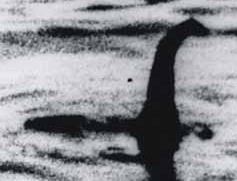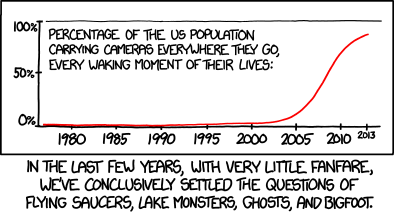We are sad to have to declare the end of the hunt for Nessie. After all, we never like to see a species — real or not — disappear. But there’s a long explanation and short explanation for why we need to finally, after decades, give up the ghost on this one.
Darren Naish has the long explanation at Scientific American, chock full of grainy photographs. This is one for the Nessie die-hards — Naish’s post takes on the details of every sighting. A sample of the arguments he marshals against the existence of the monster:
Peter O’Connor’s photo, taken in May 1960, has always been one of my favourites because it looks so plausible (ish). The story is that O’Connor, camping on the shore of the loch, got up in the early morning to relieve himself. He saw the creature, waded out waist-deep into the water, and took the photo. Apparently, he was able to get so close because — trained as a Royal Marine Commando — he could walk through water without making a sound …
The image is problematical: the creature appears to be stationary, rather than moving forward as O’Connor said, the lighting shows that the flash came from about 4 m above the water surface, not close to water-level as it should have, and we should be able to see light in the background given that the photo was taken at 06:30 in May.
But for those of us who aren’t quite obsessed enough to argue over the details of light in old photographs, Randall Munroe has a simpler explanation:
In other words, the most convincing photos out there are the ones that don’t exist. If Nessie existed, there would be so many iPhone pictures of her, we wouldn’t need to analyze them one by one for camera angles. So, at last, let’s say farewell, Nessie. We hardly knew ye.





